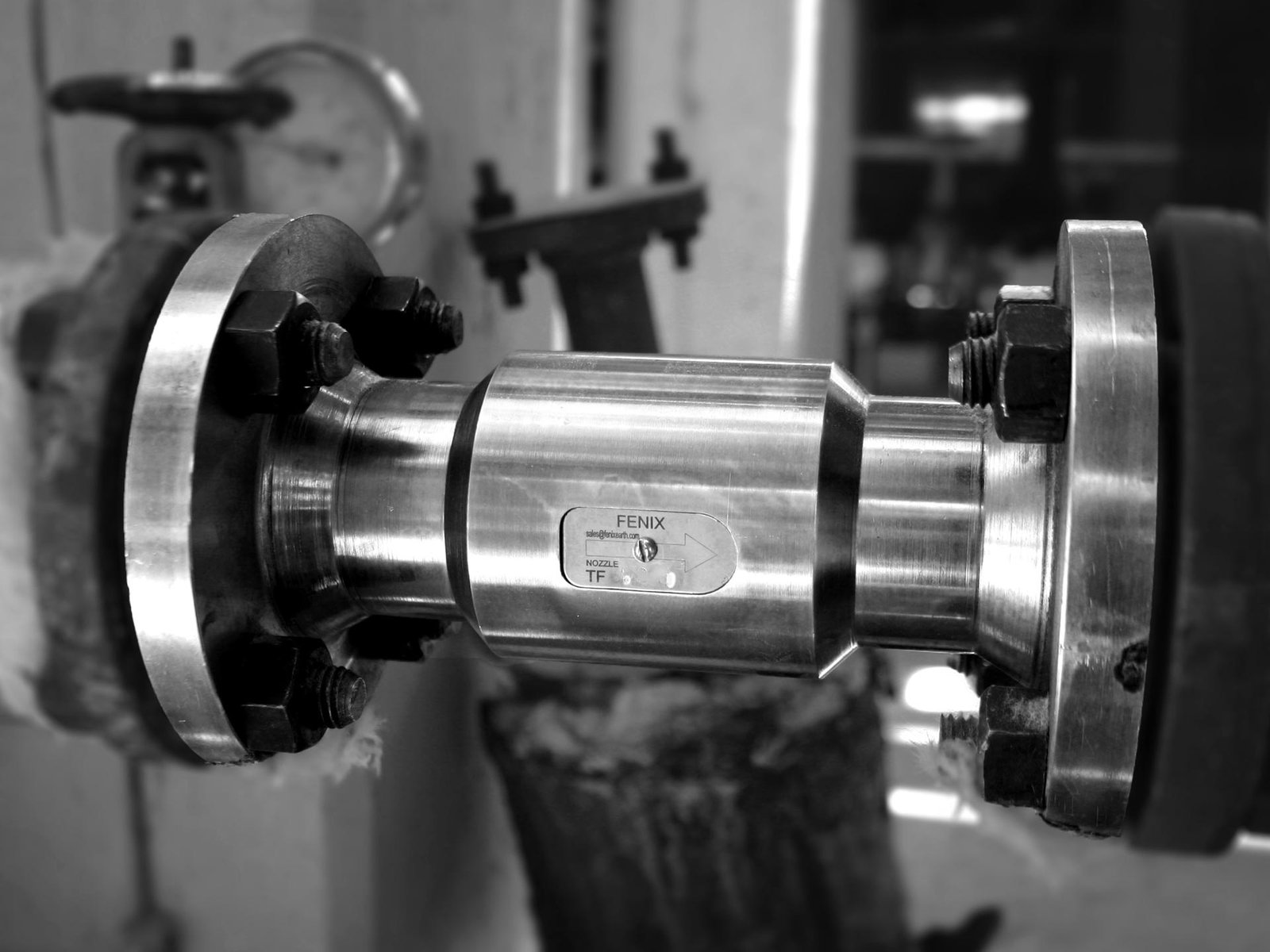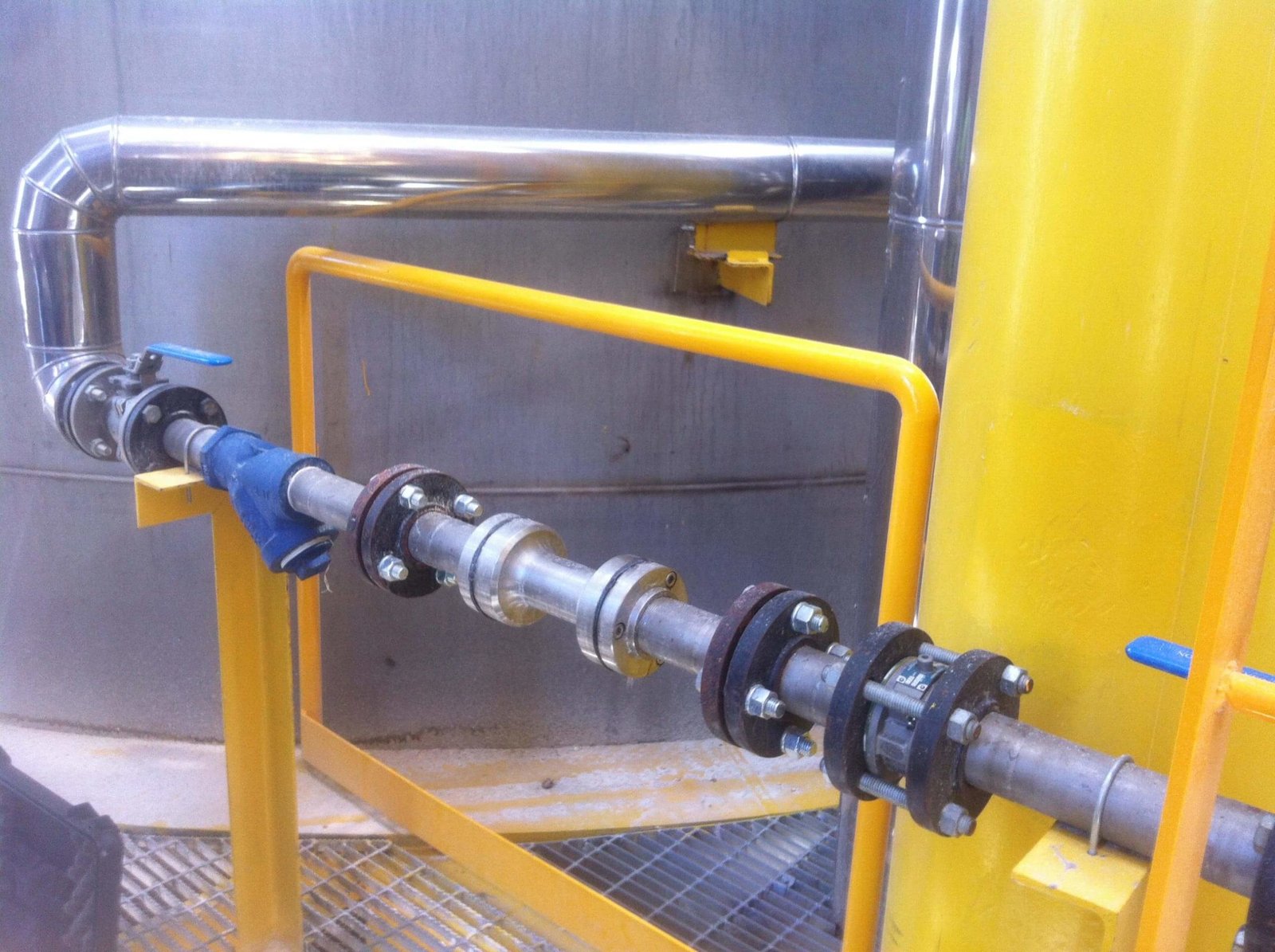
60 Day Free Steam Trap Trial
Take advantage of our free 60 day steam trap trial and see for yourself the benefits of having fenix steam traps operating in your plant.

What Is A Steam Trap?
In steam systems condensate is formed in the distribution system while the steam travels through the pipework and is various heat exchangers and applications of the process. It is imperative that this condensate is removed and returned to the boiler house.
A steam trap is a device to efficiently remove the condensate from a steam system without allowing live steam to escape.
Why Hydrodynamic Technology?
Mechanical traps (ball float, inverted bucket, thermodynamic, free float and thermostatic) are the most conventional technologies but have moving parts that will fail. Hydrodynamic traps use a new technology based on fluid dynamics and have no moving parts to fail.
How Hydrodynamic Steam Traps Work
The Fenix hydrodynamic steam traps have no moving parts.
The condensate forms a seal at the inlet to the venturi nozzle that prevents the steam passing.
The venturi nozzle uses the flashing steam to create a back pressure in the nozzle that regulates the flow through the nozzle.
Because the amount of flash varies with changes in the process the capacity of the nozzle self regulates to allow the hydrodynamic traps to work on variable loads.


Why Fenix hydrodynamic steam traps?
15 years Performance Guarantee.
Dedicated technical support.
All stainless-steel construction to prevent external and internal corrosion.
Fenix Traps have removable nozzles allowing trap capacity to be matched to load without changing the trap.
Wide variety of designs from ½” to 4”, screwed, flanged or socket welded.
Flanged traps can be tailor made to fit between the same face to face dimension as existing trap (where possible).
Fenix traps are designed to work on applications with a variable or constant flow rate so, can function on 99% of all applications.
Almost all the Fenix traps have high integrity filters with double mesh, fine and course, and machined end caps to prevent dirt bypassing filter.
Trap design allows for blow down valve on filters.
Designed to give easy access to clean nozzles if necessarily.
Conic design on small nozzle sizes to disperse dirt away from the nozzle, inverted cone on larger flows to let particle flow through the nozzle.
Benefits Of Fenix Hydrodynamic Steam Traps
Can’t fail because the traps have no moving parts
Reduced plant down time – probably the single biggest benefit of this technology
Average steam reduction on site of between 10%-20%
Reduced maintenance costs
Improved process stability
Potential production increase
Ease of trap monitoring
Eliminates the need to carry large stock of spares
Typical return on investment of less than 1 year
Implementation
We propose a staged implementation and assessment process.
Stage 1
Technical assessment: select a small number of traps of different types of applications to make sure that the traps work as expected. Typically the applications will include a heat exchanger with a variable load (control valve) and line drainage or trace heating.
Stage 2
Economic trial: the idea is a larger scale trial (20 to 50 traps for example) to prove the economic benefits of the traps by converting an area of a plant that would be representative of a complete conversion of the whole plant.
Stage 3
Full plant conversion: for smaller plants full plant conversion, for larger plants (refineries or large chemical plants) a roll out program to the whole plant.

Questions & Answers
We have an old system with a lot of dirt. Will the traps plug up frequently?
The Fenix traps have particular design features to prevent them plugging. The traps are 100% stainless steel construction to prevent internal corrosion. The nozzle has a cone inlet to disperse the dirt away from the inlet. Most importantly the trap has a high integrity filter with a double mesh, fine on the inside courser on the outside, together with machine end caps, to prevent the dirt bypassing the filter.
So even with dirty systems the traps don´t tend to plug up. They are not 100% maintenance free because the filter will need cleaning from time to time but in general plugging is not a major issue.
Can we use Fenix traps on variable flow applications?
The crux of the hydrodynamic technology is in the nozzle. It is a multistage venturi nozzle that uses the flash steam to create a back pressure in the venturi and control the flow through the nozzle. The condensate on the inlet to the nozzle is at the same pressure and temperature as the steam but on the outlet a lower pressure and temperature. The difference in sensible energy in the condensate from the high pressure side to the low pressure side results in the flash steam. This happens with all steam traps but with hydrodynamic traps we use this flash to accelerate the condensate in nozzle and create the back pressure.
Because the amount of flash varies with the changes in the process the amount of back pressure also changes and as such the capacity of the nozzle changes. So the capacity of the traps maps the variations in flow of the application. This allows this technology to be applied to 99.9% of applications in a process.
How do the Fenix traps manage start up loads?
When steam is first introduced into a system all the system is cold including all the pipework and equipment so there is a much higher amount of condensate generated. But the condensate that is initially generated is also cold so when it passes through the nozzle there is no flash steam created. With no flash steam there is no back pressure, so the capacity of the trap is much higher and evacuates the increased flow of condensate. At some point that condensate temperature increases until flash is starts to generate in the nozzle and this then regulates the flow up to the maximum operating pressure and flow.
So the traps can cope with the increased flow rate that happens at start up.
How do the traps work with superheated steam?
First it doesn´t make sense to use superheated steam on process applications because the superheated steam will reduce the heat capacity due to the reduced heat transfer and with high levels of superheat the correlation between pressure and temperature is lost to there is poor control of the process.
The main reason for using superheated steam is for power generation or rotating equipment. So the traps are only used on the distribution system. It is wrong to assume that because the steam is superheated that there is no condensate generated but it is usually fair to say that there is very little condensate.
But steam traps need condensate to function, including mechanical traps, so the key to successful steam trapping on superheated systems is to include a length of pipe (around 2m/7ft) before the trap to allow the steam to cool and condensate to form. But the hydrodynamic trap is the only technology that works well with superheated steam which is contrary to common belief. That is because, using a very small nozzle, it only requires a very small amount of condensate to form a seal. And if there is a seal there no flow of steam so the steam in the line before the trap is stagnant allowing it to lose heat and form the condensate that maintains the seal.
With a mechanical trap, when the trap opens it passes the condensate but also some steam, so now the steam in the line is replaced with superheated steam and there isn´t enough time for the steam to lose heat and generate condensate before the trap opens again and the cycle is repeated. This is why mechanical traps are heard ´popping´ rapidly on superheated applications.
So the hydrodynamic technology is the only type of trap that works well on superheated steam.
So the traps can cope with the increased flow rate that happens at start up.
What maintenance is required for the traps?
There are no moving parts to repair or replace. The only maintenance required is to clean the traps. The only spares that are required are the gaskets if necessary. If a trap is found to need cleaning it can be just the filter that needs cleaning, but even if the nozzle needs cleaning the trap can be cleaned and back on line in five minutes. No spares required, no purchase processes and bureaucracy, no stocking and work orders. Just cleaning.
But what is equally important is that because the only mode of non-function is if the trap is plugged it is very easy to detect if a trap is working or not. With mechanical traps it is necessary to check if the traps if failed open, rapid cycling, flooded, failed closed or ok. And this normally requires a certain level of expertise. With hydrodynamic traps its just a simple case of if the trap is hot it is working if it is cold it needs cleaning. Just a simple IR thermometer is all that is needed.
What applications can’t be this technology be used on?
The two main applications that we don´t recommend this technology is for are the bottom trap on a separator tank (there in no correlation between the flow and the pressure) and for overflow applications such as a deaerator (there is usually no condensate to create as seal).
How do the Fenix traps cope with evacuating air/non condensables?
When the steam is first introduced into the system the air in the system is cold and is more dense than the steam and so the lighter steam pushes the colder air through the nozzle of the trap.
Once the system reaches equilibrium any air or non condensables trapped in the system will be at the same temperature as the steam but now lighter than the steam so the only way to evacuate them would be through an air vent at a high point in the system, not through the trap. But this is the case for all types of traps.
Why do Fenix advocate changing all the traps on a plant, even ones that are considered to be working satisfactory?
Even when a trap is new it will pass some live steam. Some trap types will pass more than others but one average we would normally be able to save around 5% of the trapped steam load in a comparison against new mechanical traps (taken over the average of the typical types of traps, float, inverted bucket, thermodynamic, etc.).
But the main reason is that all mechanical traps have a finite life and will fail at some point, usually within two to three years and there is no knowing when. It´s quite possible that between the time of completing a survey and replacing failed traps a whole bunch of the ´satisfactory´ traps could have failed and so even with new hydrodynamic traps replacing the identified failed traps, there could be immediate problems from the traps that weren´t changed.
It´s not always possible for practical and economic reasons to change a complete site in one go but what we do recommend is to at least change a complete area of the plant, preferably all the traps feeding into a condensate tank or all the traps on a particular pressure system.
But the ideal is to target changing all the traps on the site as soon as possible to eliminate future possible failures.
Why are the Fenix traps more expensive than mechanical traps?
In part this is down to the materials, all stainless steel construction, in part down to the more expensive machining costs, and in part because of the service that is provided with the traps. We promote the idea that the traps are sold as a project rather than a product and as with all projects there is an element of engineering and support that is required for successful implementation.
As well as the initial survey of the site to provide the information for supplying the traps we follow up with site visits to check the performance of the traps once they are installed. It is not always possible to size the nozzle capacity correctly first time, so we supply a change of nozzle free of charge until the nozzle capacity matches with the application.
What is important is that once the traps are all fully commissioned, they come with a 15 year guarantee. But equally important is that even though they are usually more expensive than mechanical traps (on larger sizes they are often the same cost or cheaper) the payback on installing the traps is usually less than 12 months just on steam savings.
And there are usually many more benefits than just steam savings.
